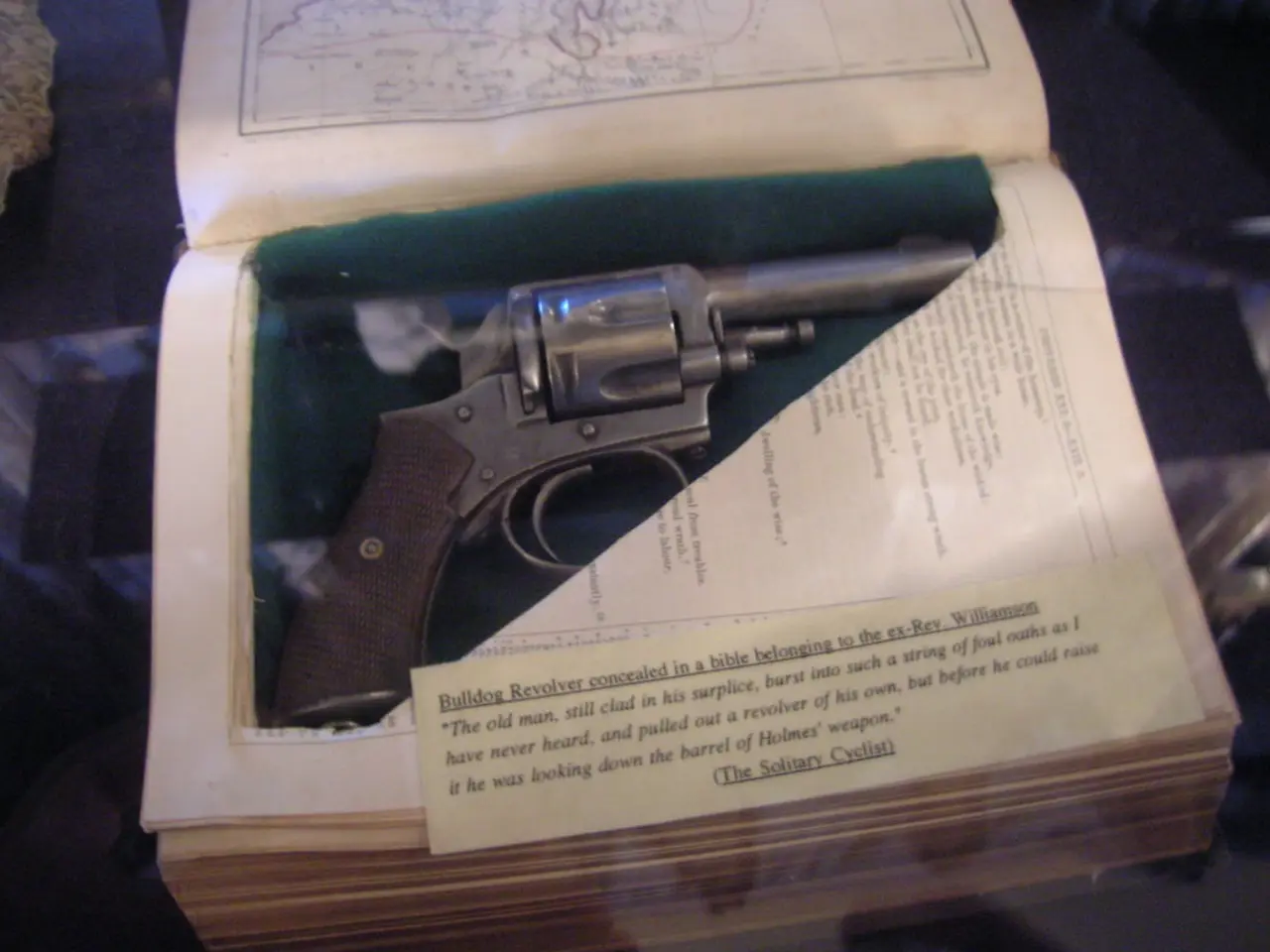Court grants certification for collective lawsuit against firearm manufacturer
Toronto Mass Shooting Paves Way for Legal Action Against Firearm Manufacturer
In a groundbreaking decision that could dramatically affect gun makers and Canadian tort law, the Ontario Court of Appeal has given the green light to a lawsuit against firearm manufacturer Smith & Wesson in relation to a handgun used in the 2018 Danforth Avenue mass shooting in Toronto. Two people were killed, and 13 others were wounded.
This ruling, handed down on June 23rd, overturns a previous decision by the Ontario Superior Court denying certification, and lets the claim based on negligence move ahead on behalf of the shooting victims and their families.
Armed and Dangerous
The lawsuit centers around allegations that Smith & Wesson neglected to implement authorized-user, or "smart-gun," technology in the handgun involved in the shooting, despite having publicly committed in 2000 to add such features. The claimants argue the manufacturer's failure to incorporate this technology constitutes a breach of its duty of care because of the foreseeable risk that firearms may be stolen and misused. The gun in question - a Smith & Wesson M&P semi-automatic pistol - had apparently been stolen before the shooting.
The class action suit was launched by survivors and relatives of the deceased, who assert that the manufacturer was negligent in failing to equip its firearms with available safety mechanisms that could have prevented unauthorized use. They argue that smart-gun technology, which limits a firearm's operation to recognized users through biometric or RFID controls, was technologically feasible and had been promised by Smith & Wesson in a 2000 agreement with U.S. government authorities.
A Legal Reversal
The lower court found that the claim disclosed a cause of action, but it denied certification, concluding that the claimants had not demonstrated a sufficient basis in fact for the proposed common issues. However, the Ontario Court of Appeal held that the certification judge had misapplied the test by delving too deeply into the merits of the claim. The court emphasized that at the certification stage, claimants only need to show there is some basis in fact that common issues exist—they don't have to prove their case on a balance of probabilities.
In this case, the court ruled that the claimants did indeed meet that requirement. The court applied the Anns/Cooper test to determine if a duty of care was owed and whether it was breached. The court found that it was reasonably foreseeable that a firearm lacking safety safeguards could be stolen and used in a crime, resulting in severe injury or death. The court also found a link between the manufacturer and the eventual victims, given the deadly nature of the product and the public statements made by Smith & Wesson about future safety innovations.
Common Ground
Whether Smith & Wesson owed a duty of care to the victims and breached it by failing to include existing safety technology hinges on common issues that can be resolved on a class-wide basis. The core allegations of negligent design and the foreseeability of harm are shared amongst all class members. The court payed particular attention to the question of commonality because it is central to class action certification.
A Turning Point
In a statement, Malcolm Ruby of Gowlings suggested that the decision confirms manufacturers of inherently dangerous products may be obligated to implement safety technologies when these are known and viable. He stated, "The plaintiffs seek access to justice to advance their claim and for safer handguns and corporate accountability. The Court of Appeal's decision reflects that handgun manufacturers have long known their products can be designed to prevent the type of unlawful use that led to the Danforth shooting."
The case will now move forward through pre-trial discovery and trial unless it settles. If it proceeds, the plaintiffs will need to establish that Smith & Wesson had the means and knowledge to implement the technology, failed to do so in violation of its duty, and that this failure was causally linked to the injuries sustained during the shooting.
The Parties
The claimants were represented by Linda Rothstein, Odette Soriano, Malcolm Ruby, Adam Bazak, Michel Drapeau, and Joshua Juneau, while Scott Maidment, Jennifer Dent, Francesca D'Aquila-Kelly, and Emily Hush represented the defendant, Smith & Wesson.
Across the Border
The Ontario decision contrasts starkly with Mexico's lawsuit against Smith & Wesson and others, which culminated on June 5th in a unanimous ruling by the U.S. Supreme Court, dismissing Mexico's attempt to hold U.S. gun manufacturers accountable for cartel-linked firearm trafficking due to the Protection of Lawful Commerce in Arms Act.
Mexico's claim, filed in 2021, accused seven prominent U.S. gun manufacturers—including Smith & Wesson, Beretta, Colt, Glock, Sturm, Ruger, Century International, and Interstate Arms—of aiding and abetting criminal dealers who supplied firearms to Mexican drug cartels and of seeking approximately $10 billion in damages to cover cartel violence costs.
While the U.S. Supreme Court decision did not necessitate a manufacturer mandate regarding smart-gun technology implementation, it upheld the notion that companies can be held responsible for participating in criminal activities if it can be proven. So, although the smart-gun technology debate continues, manufacturers in both Canada and the U.S. may find themselves under increased legal scrutiny in future legal battles related to gun crime.
- This groundbreaking legal action against Smith & Wesson, a firearm manufacturer, in the Toronto Mass Shooting case could have significant implications not only for the industry but also for finance, politics, and general-news, as it challenges the duty of care expected by manufacturers of inherently dangerous products like firearms.
- The Ontario Court of Appeal's decision on the certification of the class action suit against Smith & Wesson could create a precedent in the interwoven realms of industry, finance, politics, crime-and-justice, and general-news, forcing manufacturers to seriously consider implementing safety mechanisms like smart-gun technology to prevent unauthorized use and misuse of their products.




